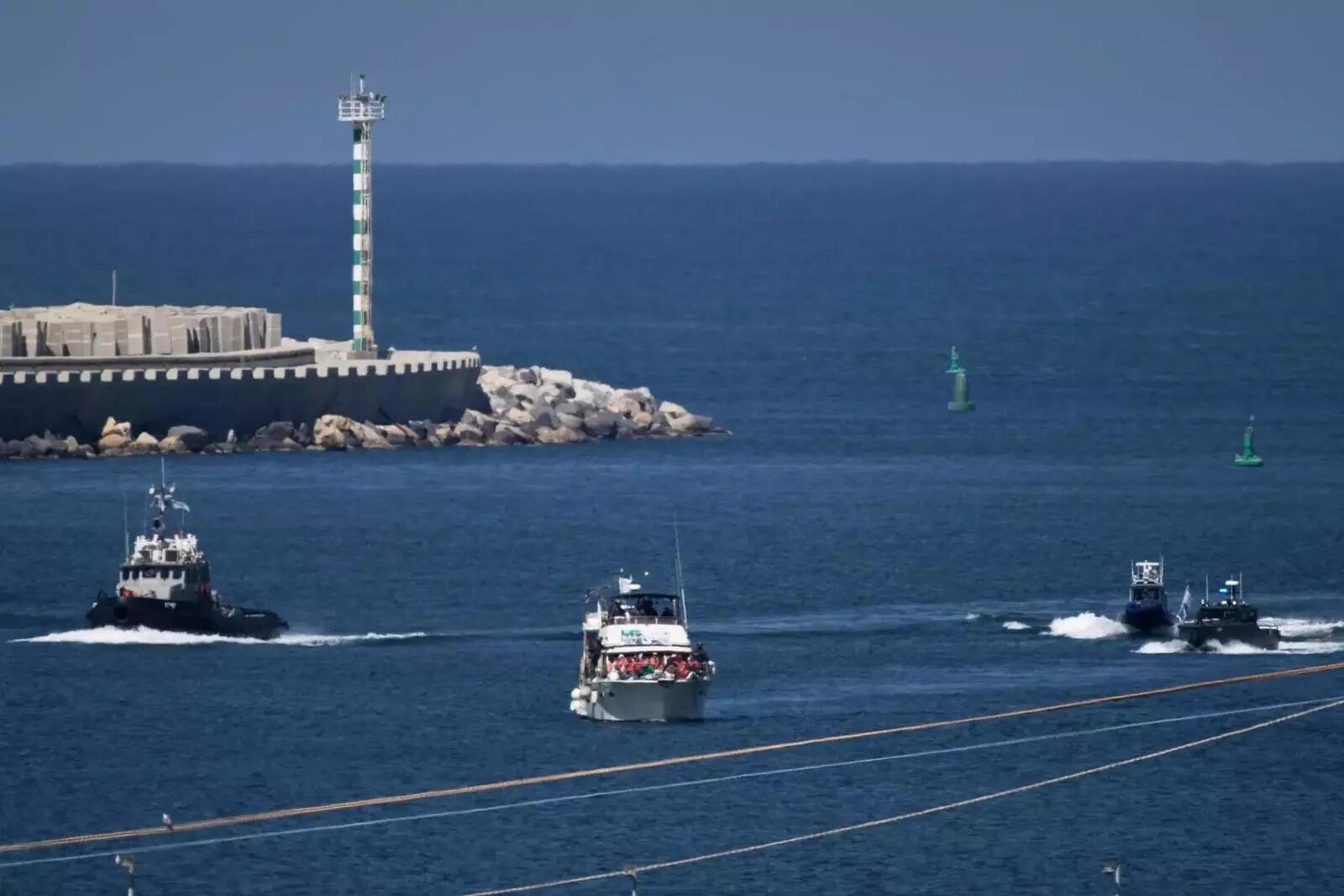When armed Israeli soldiers boarded a flotilla of civilian boats attempting to deliver food and medicine to Gaza on Wednesday night, millions of people around the world were glued to their screens, watching the events unfold in real time.In a small studio in Glasgow, two web developers worked frantically behind the scenes, updating vessel locations and uploading short clips as the tense scenes unfolded.As grainy footage from onboard cameras showed soldiers taking control of the boats, the flotilla’s website traffic exploded, hitting record numbers and turning the mission into a global digital event.“I have never seen numbers like that – not on a website I’ve ever made,” Lizzie Malcolm, co-director of Rectangle, a design and software development studio that helped track the boats, told Reuters. The site registered 2.5 million visits on Wednesday and 3.5 million on Thursday, highlighting the massive interest the mission had generated.
A high-profile campaign
The Global Sumud Flotilla was designed to breach Israel’s naval blockade of Gaza, a blockade imposed after Hamas took control of the territory in 2007 and intensified during the ongoing two-year conflict.The flotilla included over 40 civilian vessels carrying roughly 500 participants, including parliamentarians, lawyers, and activists such as Swedish climate campaigner Greta Thunberg. Although the flotilla was intercepted and escorted to Israel, it became one of the most visible efforts against the blockade. A second flotilla of 11 boats has already been launched, demonstrating the movement’s momentum.The campaign leveraged sophisticated social media strategies, real-time boat-tracking technology, and grassroots organizing to amplify its message. This multi-layered approach ensured that the flotilla did not just make headlines—it created a global conversation.
International support and protests
While Israel maintains that its naval blockade is legal, the flotilla drew widespread support worldwide. Its seizure triggered protests in cities across Europe, as well as in Argentina, Mexico, and Pakistan. Politicians and leaders from countries including Colombia and Malaysia voiced criticism of Israel’s actions.The flotilla has benefited from a larger shift in international opinion, with countries such as France and the UK recognizing Palestinian statehood in response to Israel’s offensive.
From small efforts to a coordinated global mission
The Global Sumud Flotilla was not the first attempt to challenge the blockade. Smaller flotillas and marches, including an effort in June to reach Gaza via Egypt’s Rafah border crossing, were either disrupted or received less attention.Learning from these experiences, organizations including March to Gaza convened in Tunis in June to plan a larger, coordinated campaign.The movement’s strength came from extensive planning and local support. The flotilla received 20,000 applications from prospective participants and donations exceeded expectations. In Italy, Music 4 Peace collected more than 500 tons of aid in just five days. Greece sourced 25 boats from across Europe, while unions supported strikes and protests in ports, ensuring immediate grassroots action during the interception.
A live feed to the world
The flotilla’s organizers maximized global engagement through live updates on X, Telegram, and Instagram, as well as press conferences via Zoom. High-profile figures like Nelson Mandela’s grandson and Greta Thunberg provided visibility and credibility, Reuters reported.The Glasgow-based developers, Malcolm and Daniel Powers, worked alongside London’s Forensic Architecture research group to integrate advanced tracking, including Garmin devices and even cellphones as backups.During the Israeli boarding, live cameras offered viewers a rare, firsthand perspective of the events.

Why the Flotilla became global
The flotilla’s international resonance stemmed from a combination of strategic organization, technological innovation, and compelling human stories. From carefully coordinated local efforts to high-tech tracking and real-time updates, the campaign turned what could have been a regional protest into a global movement. By engaging millions online, mobilizing grassroots supporters, and including high-profile participants, the Global Sumud Flotilla not only challenged Israel’s blockade but also created a lasting cultural and political impact worldwide.

